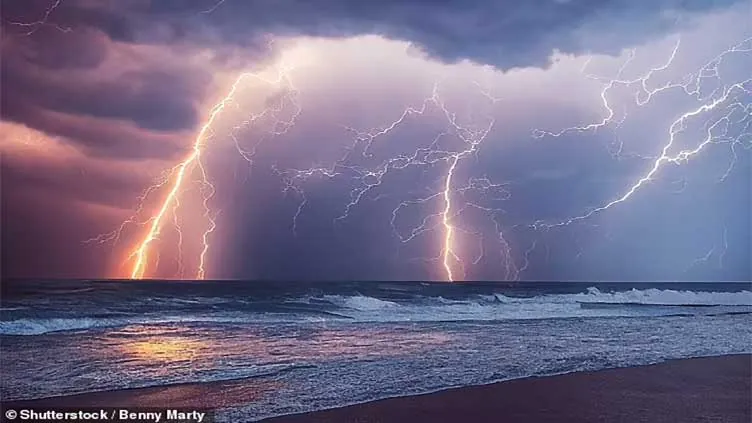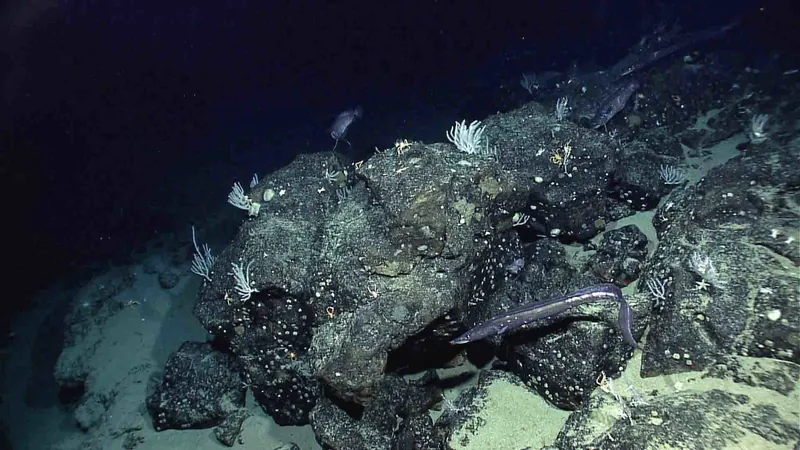
Groundbreaking Discovery: Scientists Unveil the True Source of Life on Earth!
2025-03-17
Author: Mei
Introduction
Researchers have made a shocking revelation about the origins of life on our planet—an unexpected phenomenon is at the heart of this remarkable discovery. New findings suggest that life on Earth may have been initiated not by traditional lightning strikes, but rather by a process called 'microlightning' generated through the crashes of waterfalls and ocean waves.
What is Microlightning?
This tiny yet powerful form of electricity occurs when water droplets collide with one another, resulting in minuscule electrical charges. A research team at Stanford University replicated these microlightning sparks in a laboratory setting, mixing them with gases that were present in the primordial atmosphere of early Earth. Astonishingly, this combination led to the formation of organic molecules, including key components required for DNA synthesis.
Challenging Conventional Theories
Historically, scientists have relied on the decades-old Miller-Urey hypothesis, which proposed that frequent lightning strikes played a significant role in creating the electrical energy necessary for life-forming reactions approximately 3.5 billion years ago. However, this theory faced criticism due to the infrequency of lightning strikes and doubts regarding their capability to sustain life-creating energy across vast oceans.
The Revolutionary Microlightning Theory
Enter the revolutionary 'Microlightning' theory, which dramatically shifts our understanding of the conditions that may have fostered life. This new framework posits that chemical reactions could occur continuously in water-laden settings during Earth's formative years, creating a more feasible scenario for the emergence of life.
Insights from Professor Richard Zare
Professor Richard Zare of Stanford University's School of Humanities and Sciences explained, "On early Earth, there were water sprays everywhere—surrounding crevices and crashing against rocks—facilitating these potent chemical reactions." The research implies that exotic mixtures of gases, like carbon dioxide (CO₂), nitrogen (N₂), ammonia, and methane, pervaded the early atmosphere, contributing to these life-giving interactions.
The Importance of Uracil
In a striking turn of events, Zare’s team identified uracil as one of the organic compounds produced in the microlightning process. Uracil, a crucial building block of RNA, is essential for the creation of proteins, enzymes, and chlorophyll—fundamental elements of living organisms.
Challenging Previous Beliefs
This groundbreaking research challenges long-held beliefs that meteors or spontaneous lightning delivered vital organic materials to Earth. Instead, the answers could lie beneath the surface of what is already present in water.
Understanding Electrical Charges in Water
Furthermore, Zare and his colleagues unveiled intriguing details about the formation of electrical charges in splashing water. Larger droplets typically carry a positive charge, whereas smaller droplets hold a negative charge. This phenomenon occurs as water droplets gain or lose electrons during the process of crashing and splattering.
Conclusion
So, the question remains: How did primitive bodies of water become such powerful catalysts for life? According to this new theory, the answer reflects a dynamic interaction of physical forces, setting the stage for a thriving biosphere.



 Brasil (PT)
Brasil (PT)
 Canada (EN)
Canada (EN)
 Chile (ES)
Chile (ES)
 Česko (CS)
Česko (CS)
 대한민국 (KO)
대한민국 (KO)
 España (ES)
España (ES)
 France (FR)
France (FR)
 Hong Kong (EN)
Hong Kong (EN)
 Italia (IT)
Italia (IT)
 日本 (JA)
日本 (JA)
 Magyarország (HU)
Magyarország (HU)
 Norge (NO)
Norge (NO)
 Polska (PL)
Polska (PL)
 Schweiz (DE)
Schweiz (DE)
 Singapore (EN)
Singapore (EN)
 Sverige (SV)
Sverige (SV)
 Suomi (FI)
Suomi (FI)
 Türkiye (TR)
Türkiye (TR)
 الإمارات العربية المتحدة (AR)
الإمارات العربية المتحدة (AR)